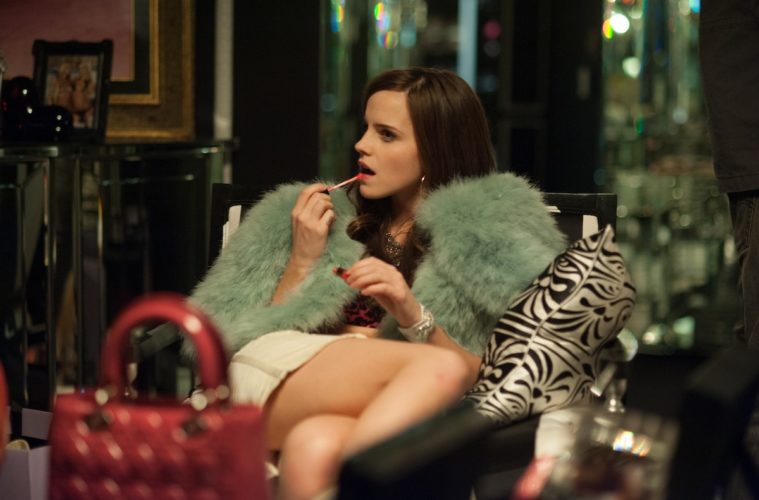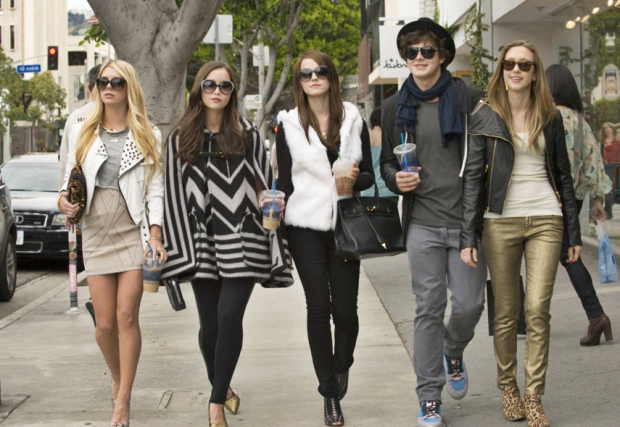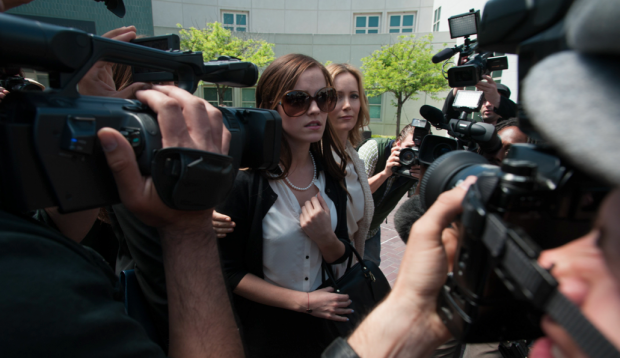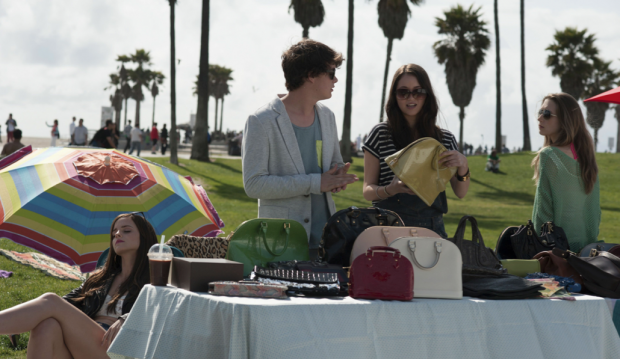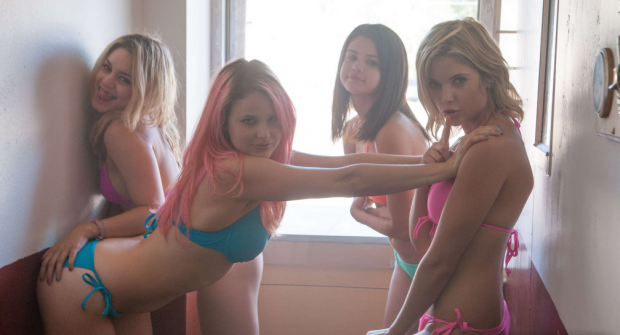It’s inevitable that comparisons between Harmony Korine’s Spring Breakers and Sofia Coppola’s The Bling Ring would spring up: both are new offerings from Gen X auteurs dealing with “bad girls” and their pursuit of a dream based on materialism and, ergo, celebrity culture. Though, in putting each side-by-side, we find specificities as to why, exactly, each director chose their subject of the successive generation.
Throughout The Bling Ring, I found myself asking if it was Sofia Coppola’s least-humane film. It seemed that her characters were absent of the compassion with which she usually treated even the least-relatable of her bourgeois protagonists, such as those in her last film, Somewhere. There, for instance, an irredeemably shallow movie star’s boredom and longing were given, through certain “slow-cinema” aesthetics, the upmost emotional integrity.
As for the titular “bling ring,” there’s sympathy towards their desire — but is that all they are? It seems throughout that Coppola is essentially chasing an enigma. The five teenagers at the center seem to be nothing more than their clear motivations for an elevated place within a social structure, but even that — due to its narrow narrative focus and art film-friendly ellipsis — force placement in something of a vacuum.
Before we even “get to know them,” the initial scenes already show them robbing, the process of their interrogation by the law and press, as well as, even, the aftermath of their subsequent trial; we instantly get the idea of actions without explanation. The rest of the film, depicting their spree while, also, intercutting it with them as almost-talking heads being questioned, seems aware of the difficulty of filling in gaps. Psychology is offered, but never sincerely.
The impossible chase of some satisfying explanation is best exemplified in the relationship between Marc and Rebecca, furthermore a reasoning for her, seen through his question-and-answers process. In one, asserting that he “loved her” in a platonic sense and, later, stating how he “thinks” that Rebecca’s activity was triggered by the pursuit of a lifestyle; this is reaffirmed in voice-over while he watches her walking away, he now as guilty as her. As well, Marc’s own excuse being a self-described, low self-esteem engineered by the shallow Los Angeles setting; him not being an “A-list-looking guy,” so to speak. Yet his social interaction throughout The Bling Ring is at a constant ease, figures gravitating toward his circle without hesitation.
Even more so, it would seem a clear goal of most filmmakers to attempt humanizing two of the other members of the “ring” — the most blatant valley girls, Nicki and Sam — yet, when given a chance within the confines of their room, simply talking to each other about their aspirations, it can’t help but revolve around the pursuit of fame. Along the lines of Somewhere — where ennui instantly came with fame and riches — it, too, seems to align with the pursuit. Even when trying to assemble personas out of separate pieces — whether it be the stolen goods or pop song singalongs — they seem like hopeless voids; their put-ons are in front of an invisible audience and, thus, only echoing off each other.
But, still, the distance from the subject is best seen in an extended sequence that ever appropriately places the camera quite far away: a long take of Marc and Rebecca robbing Audrina Patridge’s home, placing them as just tiny figures within the celebrity mansion, and it itself as just a part of a Los Angeles landscape. Here, Coppola’s perspective remains the dominant one.
Late in the third act we even realize we’re seeing an assemblage of the Vanity Fair article on which this film is based, its subject dictating a projection and Coppola already calling into question a source of the film’s information, furthermore the seemingly innate desire to create a narrative. But, at the end of the film, it’s worth asking about Coppola as a person if she suggests that we should all just accept an inevitable existential boredom that runs through the air.
On the other hand, Harmony Korine, the enfant terrible himself, is often put under some kind of investigation for his motives. His frequent use of non-actors — especially in the first two features, Gummo and Julien-Donkey Boy — brought up accusations of exploitation and mockery of the less genetically fortunate, many thinking their grotesque appearances were used as excuses for non-sequiturs and eventual punch lines. But Korine, if anything, wears his heart on his sleeve; the sometimes irritatingly pronounced emotions of his characters are always central to the films’ textures, even in something like Trash Humpers.
That’s certainly no less true for Spring Breakers, where melancholy and debauchery flow through each other. More to the point, Korine and Coppola’s films respectively take place in fantasy and reality — the former an accumulation of desires and culture, the latter an interpretation of facts. Yet, while this may seem like nitpicking, Coppola’s diegetic implementation of songs (including “All of the Lights,” “Bad Girls,” and “212”) having all been unreleased at the time of the film’s 2008/09 setting tips to a certain idealization and assembly of setting.
But a greater point in this certain separation of works is seen in The Bling Ring’s theme of entitlement and easiness of entry provided by the internet, wherein the combination of Google Earth, Facebook, and YouTube form an overload of access. In comparison, Korine’s film is willing to reach into the past for pop culture, e.g. Britney Spears marking a keystone of the girls’ identities — nostalgia, of course, informing the present, whereas the titular ring aim to be nowhere but the absolute now — but Spring Breakers only further harks to a temporal scramble through its ever-so-apparent ellipsis and repetition. Even the presence of more current pop-culture (such as trap rap) only bleeds into the aforementioned past touchstone of Spears, as in one the movie’s most amusing sequences: pairing one of her most melodramatic ballads with a more in-vogue, current, stream-of-consciousness violence.
Though bravado sequences like these explain why Spring Breakers is a more flesh-and-blood film, so to speak; its willingness to operate on subjective desires — which dwarfs its many anthropological impulses — makes it a truer “bad girl” film. In the end, it seems that Korine believes the surface is obtainable, while Coppola doesn’t — and, if anything, doesn’t even believe it to exist. Korine’s girls revel in their excess; while Coppola’s seem eternal cyphers orbiting around it. One seems to operate on emotions, the other intellectual remove.

